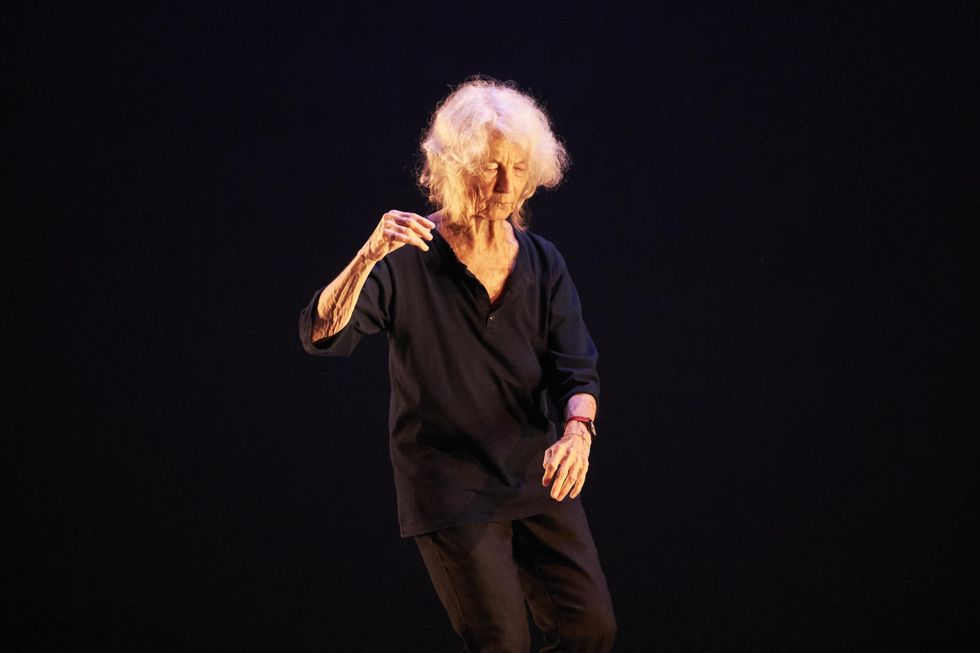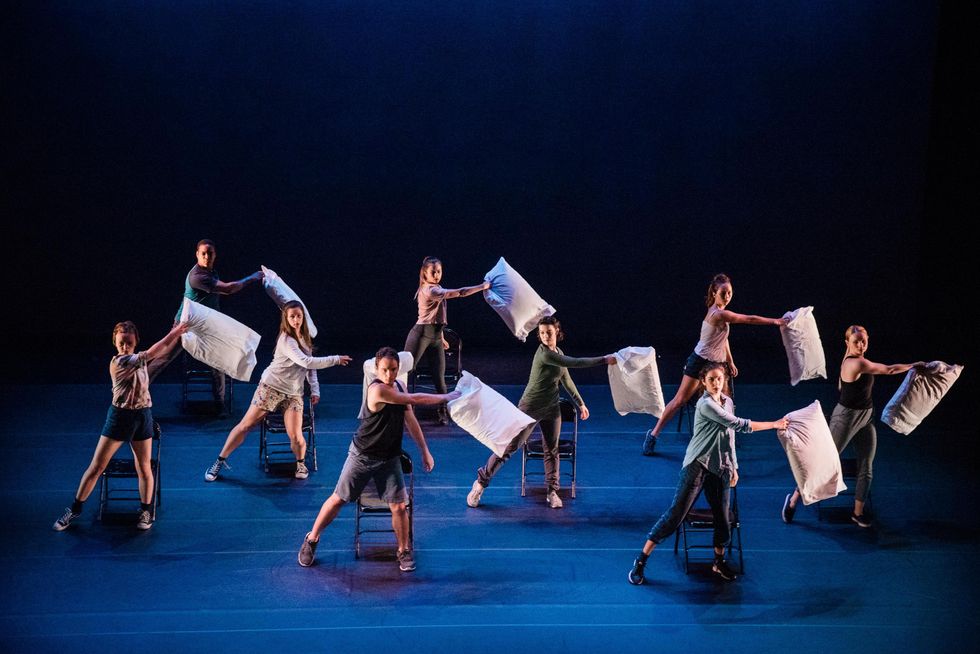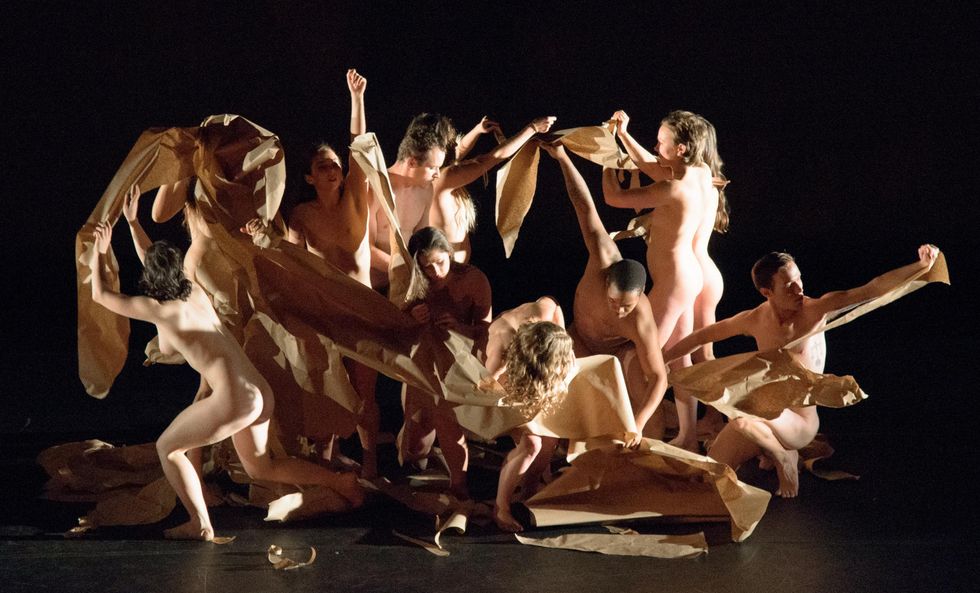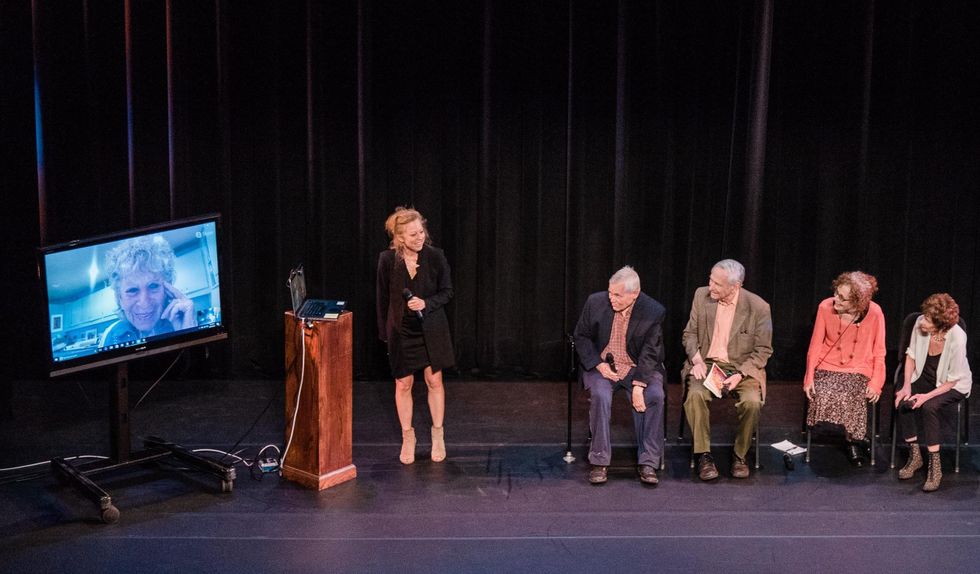New York City Loves Anna Halprin
The Radical Bodies evening broke all attendance records at Hunter College’s Kaye Playhouse on May 31. People were lining up in the courtyard almost two hours before curtain, and the mood was festive. All 650 seats were filled, more than 100 people were turned away and about 60 went across the street to watch the live stream.
Why such a hubbub? The admission was free and the event was historic: It had been 50 years since Anna Halprin caused a scandal when she brought her Parades and Changes to Hunter. The “Paper Dance,” which involves disrobing calmly, methodically and completely, was labeled “indecent exposure” in 1967 and led to a warrant for Halprin’s arrest.
I am a co-curator of “Radical Bodies: Anna Halprin, Simone Forti and Yvonne Rainer in California and New York, 1955–1972,” the exhibit now at the NY Public Library for the Performing Arts. Last week’s performance at the Kaye Playhouse was a related public event, presented by Jody and John Arnhold and performed by the UC Santa Barbara dance company. Simone Forti, one of those celebrated in our exhibit, was a guest artist.

Simone Forti in News Animation, Kaye Playhouse, photo Matt Capowski
It’s rare that a student concert would cause such a commotion. But dancers and teachers of all styles were curious about this infamous piece. Choreographers like Stephen Petronio and Doug Varone were in the house, as well as artistic directors Virginia Johnson of Dance Theatre of Harlem and Eduardo Vilaro of Ballet Hispanico.
The “Radical Bodies” exhibit takes the viewer through the lineage of Anna Halprin, who pioneered task improvisations in California; through Simone Forti, who carried that approach to New York in her inimitable art/mind/body; and Yvonne Rainer, who absorbed some of the Halprin/Forti aesthetic before cofounding Judson Dance Theater. And that’s the creation story of postmodern dance in a nutshell.

UCSB Dance Company in Chair/Pillow by Yvonne Rainer, photos Reiko Yanagi
Here in New York, Halprin is often not fully recognized for her role in the development of postmodern dance. The “Radical Bodies” exhibit seeks to rebalance that perception. For the performance at Kaye Playhouse, the UCSB students embodied this historical trajectory by dancing Halprin’s “Paper Dance” from Parades and Changes (1965) as well as Rainer’s Chair/Pillow (1969). The “Paper Dance” culminated in a beautiful moving sculpture, with the UCSB dancers tossing the paper upward in a perfect storm of joy. (José Limón’s Dances for Isadora was also performed.)

USCB Dance Company in the Paper Dance, Kaye Playhouse, ;photo Reiko Yanagi
Co-curator Ninotchka Bennahum and I led a post-performance panel that included Halprin, still feisty at 96, on Skype. When the audio failed to work, a wave of disappointment went through the audience. Finally, at the moment the sound came through, squeals of delight erupted in the house. Anna Halprin, rock star.
Halprin spoke of how, when she made the “Paper Dance” with composer Morton Subotnick in 1965, she wanted to see the dancers’ skin against the paper so “they had to be nude.” The paper looked and sounded like water to her. When an audience member asked how she reacted to the warrant for her arrest, she said, “I got out of town.” Which is true. The esteemed critic Jack Anderson, who was on the panel, said that the two main critics at the time, Clive Barnes and Walter Terry, colluded to hold their reviews until Anna could leave New York to avoid arrest. Also sharing their memories on the panel were Charles Reinhart (a 2003 Dance Magazine Award recipient) and dancer/educator Alice Teirstein.

Anna Halprin on Skype, Ninotchka Bennahum standing. Sitting from left: Jack Anderson, Charles Reinhart, Wendy Perron, Alice Teirstein, photo Reiko Yanagi
I invite you to stop in at the Vincent Astor Gallery at the NY Public Library for the Performing Arts at Lincoln Center (Amsterdam Avenue entrance) before September 16. You will learn about the dance revolution that started in California and swept to New York via these three extraordinary women rebels.




